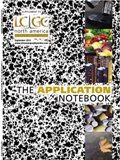Nitrosamines in Drinking Water
N-Nitrosodimethylamine and other structurally similar nitrosamines are classified as probable carcinogens by the U.S. EPA, and their presence has been reported in California drinking water since 1998.
Leo (Jinyuan) Wang and William C. Schnute, Dionex Corporation
N-Nitrosodimethylamine and other structurally similar nitrosamines are classified as probable carcinogens by the U.S. EPA, and their presence has been reported in California drinking water since 1998. Established notification levels for these nitrosamines have been set to 10 ng/L (parts per trillion).
Analysis of trace levels of nitrosamines in water samples involves solid phase extraction (SPE) and concentration, followed by liquid or gas chromatographic (LC or GC) separation with a sensitive and selective detector, preferably mass spectrometry (MS or MS-MS).
The following describes an LC–MS method for improved chromatographic separation and detection using an MSQ™ Plus single quadrupole mass spectrometer.
Experimental
A Dionex UltiMate® 3000 HPLC system was coupled to an MSQ Plus MS by an electrospray ionization (ESI) interface. Chromatographic separation was achieved on an Acclaim® PA2 column with gradient elution at 0.25 mL/min: 0.5% to 80% acetonitrile from 5 to 21 min, and held constant at 80% for 2 min, 0.005% formic acid was held constant throughout the run. The column temperature was set at 10 °C and the injection volume was 20 µL. The MSQ Plus MS was operated in selected ion monitoring (SIM) mode and the protonated molecular ion [M+H]+ was used as the quantification ion for each of the analytes as shown in Table I.

Table I: SIM scan parameters for studied compounds.
MS parameters, such as probe temperature, needle voltage, and cone voltages, were optimized to provide the best sensitivity.

Figure 1: N-Nitrosodimethylamine and other nitrosamines in drinking water by LCâMS.
Results
In Figure 1, the UV chromatogram shows well resolved chromatographic separation (20 ng of each analyte in a 20 µL injection), and the MS SIM chromatograms demonstrate the advantage of MS for selective and sensitive detection (2 ng of each analyte in a 20 µL injection). For N-Nitrosodiphenylamine (peak 10 in Figure 1), interferences were chromatographically separated from the target analyte, showing the combined benefits of chromatographic separation and MS detection — in achieving a high level of confidence in data acquisition. With the addition of proper SPE sample enrichment, this method provides sufficient sensitivity to enable detection of nitrosamines in water samples at the low parts per trillion levels.
UltiMate and Acclaim are registered trademarks of Dionex Corporation and MSQ Plus is a trademark of Thermo Fisher Scientific, Inc.

Dionex Corporation
1228 Titan Way, P.O. Box 3603, Sunnyvale, CA 94088
tel. (408) 737-0700; fax (408) 730-9403
Website: www.dionex.com

Separation of Ultra-Short and Long Chain PFAS Compounds Using a Positive Charge Surface Column
December 11th 2024A separation of ultra-short and long chain PFAS (C1-C18) is performed on a HALO®PCS Phenyl-Hexyl column along with a HALO®PFAS Delay column which demonstrates excellent retention for both hydrophilic and hydrophobic analytes.















